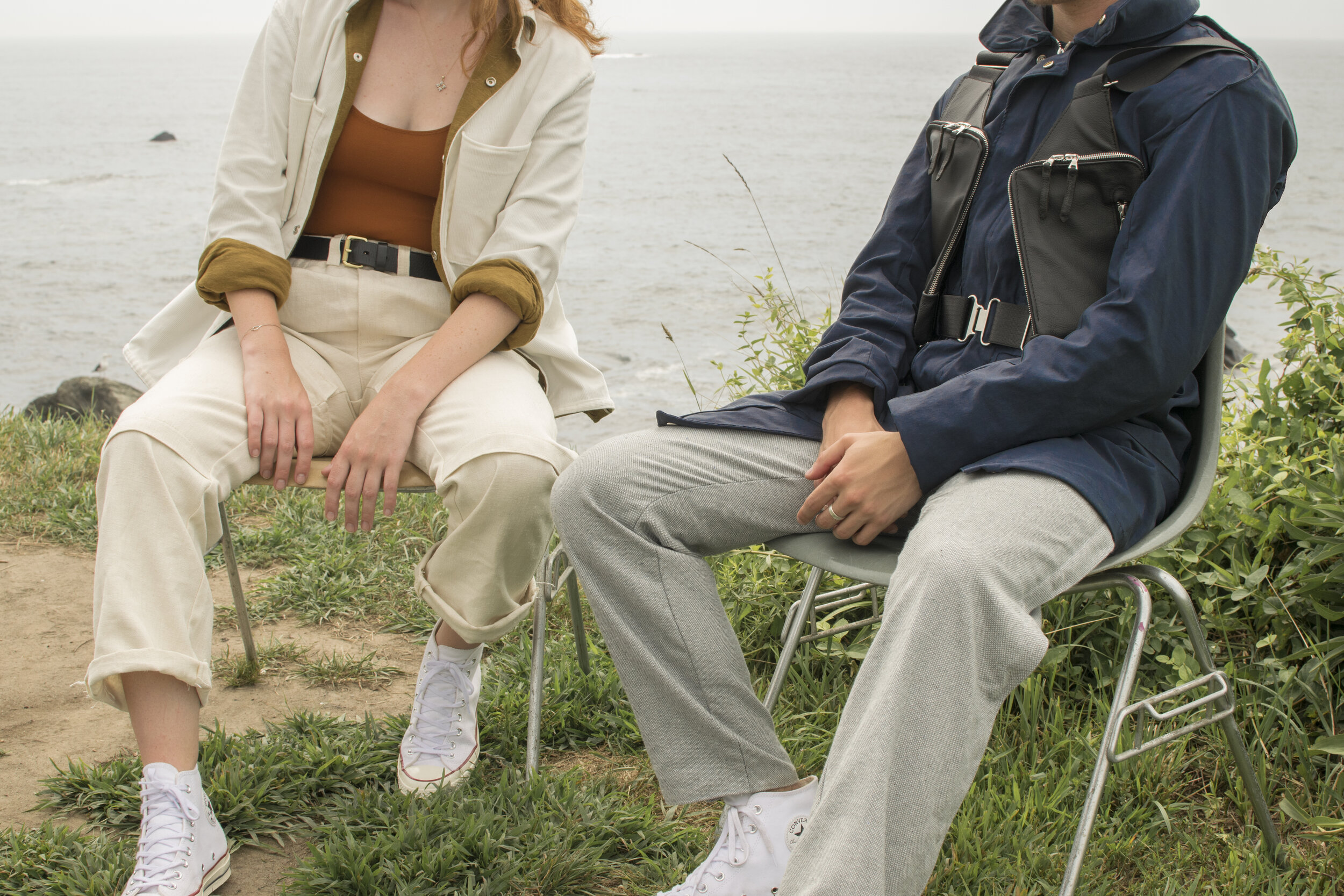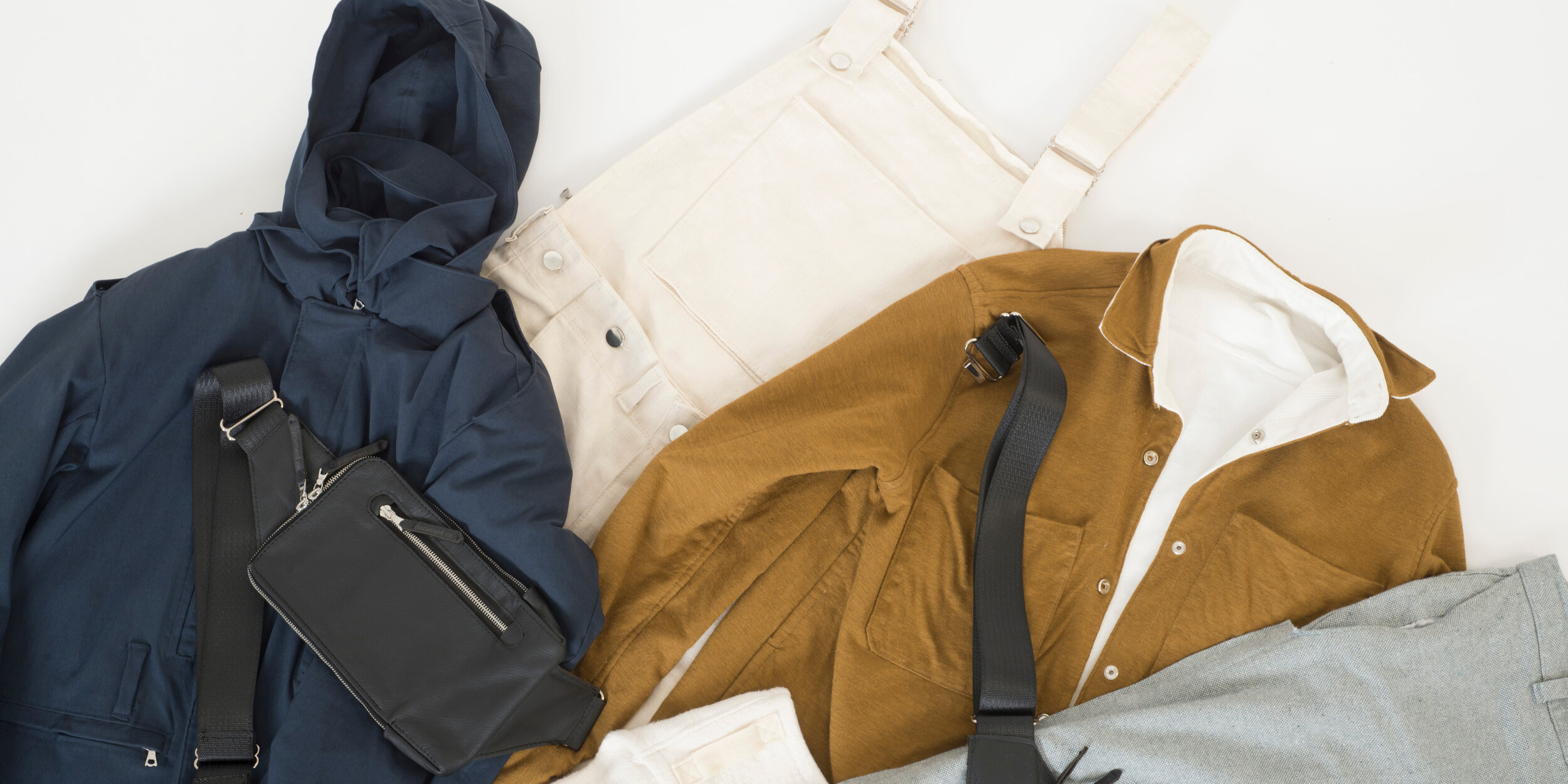
A senior thesis in collaboration with Sam Owens exploring how high quality, multi-functional garments can cut down on one’s wardrobe and reduce the impact of fast fashion on the environment.
Scroll for an overview.

Watch the Fawn Collection Campaign
document: “an original or official paper relied on as the basis, proof, or support of something”
via: “by way of; through the medium or agency of”
The rate of consumption in the fashion industry is at an all time high, causing widespread environmental impact. The fast fashion industry is a major part of this issue.
Poor quality clothing and fast trends exponentially decrease the life of a garment. As a result, consumers today purchase 60% more than 20 years ago, while wearing it for half as long (Kell). Buying less and buying better is key to helping combat this issue.
By combining this mindset with garments that contain more than one function, a lifelong story is documented within the garments themselves.
Your garments are your documents.
Industry Professionals Interview Excerpts
-

“If there are more functions to a garment the aesthetics will become a secondary function so we will buy less clothing and use the pieces we have for more situations.”
Borre Akkersdijk
Founder/CEO, BYBORRE
-

“One thing that like kind of bums me out there was this idea ten years ago...this idea of timelessness, buy less buy better.”
Lawrence Schlossman
Brand Director, Grailed
-

“You don’t need a whole collection... you need whatever your staples are and two or three pieces added every couple of weeks.”
Bill Hinkle
Director of Design, Joseph Abboud
-

Current Industry Model
This is the current fast fashion model that many people end up feeding into. It is cyclical and self-fulfilling.
Brands produce product that is cheap and of lower quality, leading to shorter product life cycles which do not yield meaningful relationships with the wearer beyond its superficial look. Once this product fails or has become “boring” to the wearer, the product is discarded and the cycle repeats.
From a monetary standpoint, it is a successful business model. Fast fashion brands are producing plenty of product to meet the current trends and demands of the consumer, all while turning large profits. However, this is all at the expense of the damage to the environment.
-

Shifting the Model
It is our goal that if things can be made better, can be worn more, and are able to create bonds beyond the superficial look of the garment, it will reinforce the user to feed into the current fast fashion model less.
In fact, a recent survey states that one in eight people are more likely to purchase expensive, longer lasting clothing over cheaper fashionable clothing. We see this project as an opportunity to raise this number and create a greater change. (Abdullah)
This is systemic innovation. Systemic innovation begins with a change of thought patterns and behaviors, which lead to the building of structures and practices defining and describing economic activity by ecological limits. (Fletcher)

Your garments are your documents.
Abdulla, Hannah. “Survey Suggests Fast Fashion Is Slowing Down.” Juststyle, 19 Feb. 2019, www.just-style.com/news/survey-suggests-fast-fashion-is-slowing-down_id135630.aspx.
Kell, Georg. “Can Fashion Be Sustainable?” Forbes, Forbes Magazine, 4 June 2018, www.forbes.com/sites/georgkell/2018/06/04/can-fashion-be-sustainable/#756ebd1412b7.











